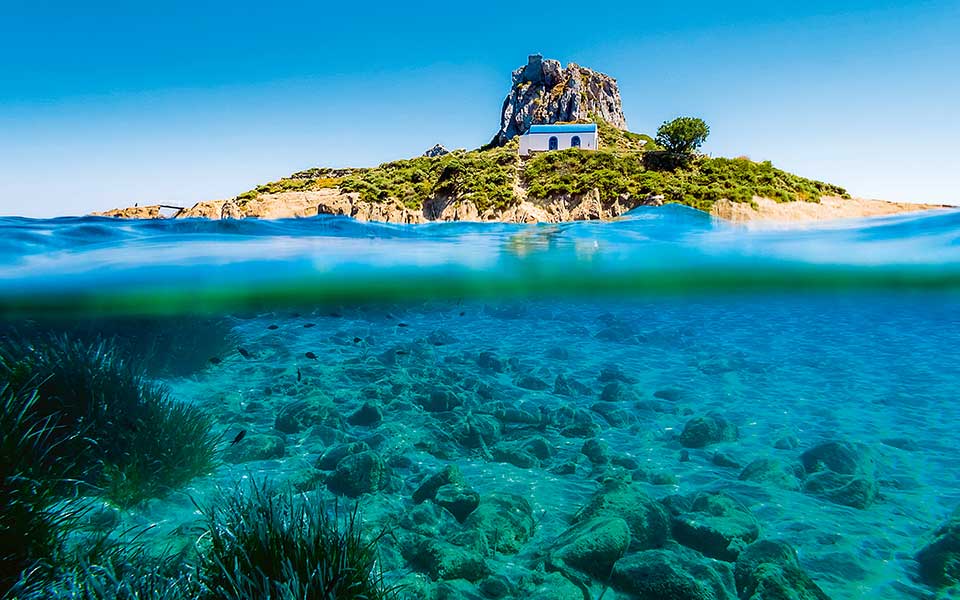Imagine waking up in the early morning, your bed gently rocking from side to side in a soothing, rhythmic way reminiscent of the respiration of some enormous slumbering beast, your ears catching the muffled creaking of ropes and wood.
As you step out on deck, you’re dazzled by the brilliant light of the Greek sun, but comforted by a tender breeze. Gazing away from land, you see the waters of the Aegean, ranging from the deep and impenetrable dark blue of the horizon to a variation of lighter colors as the surface of the sea a few hundred yards out ripples in the wind. Here and there you glimpse some flecks of brilliant white foam on a cresting wave. Closer at hand, the water surrounding the boat is an almost transparent green; you can see the undulating sand below, where little fish are stirring up the sea floor.
Looking around, you find yourself anchored in a small cove, far away from roads or cities, from crowds and commerce. This is a place that has always been the way it is now. On both sides, grey limestone cliffs plunge into the water, encircling a small sandy beach that marks the end of a short ravine. The beach itself is shaded by a lone tamarisk or two, and in the ravine you see some late-flowering oleander bushes. On the higher reaches, there are tangles of shrubs, and the aroma of wild thyme is wafting on the breeze.
It’s peaceful here, and quiet without being silent. What you can hear includes the lapping of the waves against your boat and the sound as they strike on the nearby rocks. The cicadas, somewhere ashore, are loud, and there’s the buzzing of a stray bee and the plaint of seagulls. If you concentrate a little, you can catch a distant tinkling of goat bells, the sound of summer itself. If you’re patient – and you have no reason not to be – the goats will appear, leaping merrily across jagged rocks and bleating at one another before eventually descending to the beach for a sip or two of salt water. A bird of prey is flying in tight lonely circles close to the mountain peak high above you.
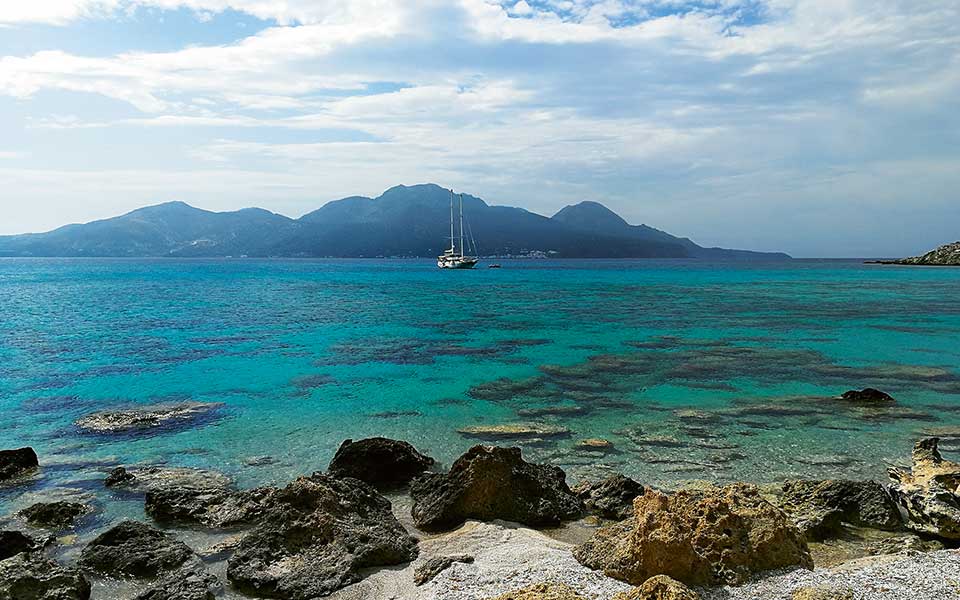
© Heinrich Hall/Peter Sommer Travels
These are the impressions of just a few minutes, the first thoughts of a brand-new day. Perhaps you spent the previous evening planning what to do, or maybe you slept the deep, dreamless sleep of the exhausted mountain climber or avid swimmer. You might have whiled away the evening aboard ship with friends, enjoying local wine and deep conversation. You could be truly blessed, and have spent the night entangling your limbs with those of a loved one, a discreet sea swell rocking you along and sweetening your embraces. But all of that doesn’t matter now: a new day has begun, and its tone has been set by the sheer beauty that surrounds you, promising so much, either at sea or on land.
What I’ve just described isn’t some fantasy; it’s a very real experience, one that is available on the more remote shores of nearly all the major islands of the Dodecanese (the description I just gave is based on a particular cove in Kalymnos), and perhaps even more so on the small islets scattered between them. It isn’t, or doesn’t have to be, a spectacular once-in-a-lifetime event. It’s something that is, in fact, easy to find, although there’s one condition: you need to be on a small boat.
The islands of the Dodecanese have been sculpted by the sea for eons and, since the earliest days of prehistory, the sea has been both a barrier and a connector between these land masses, shaping the lives and cultures of the humans inhabiting them. Thus, the character of these islands is defined as much by the region’s waters and seascapes as it is by its rocks and landscapes. There are many enjoyable things to do on each of the islands, but to really appreciate their maritime nature, that element that has permitted them to be different from one another, to be at times cosmopolitan and at times primeval and remote, you need to approach them by sea.
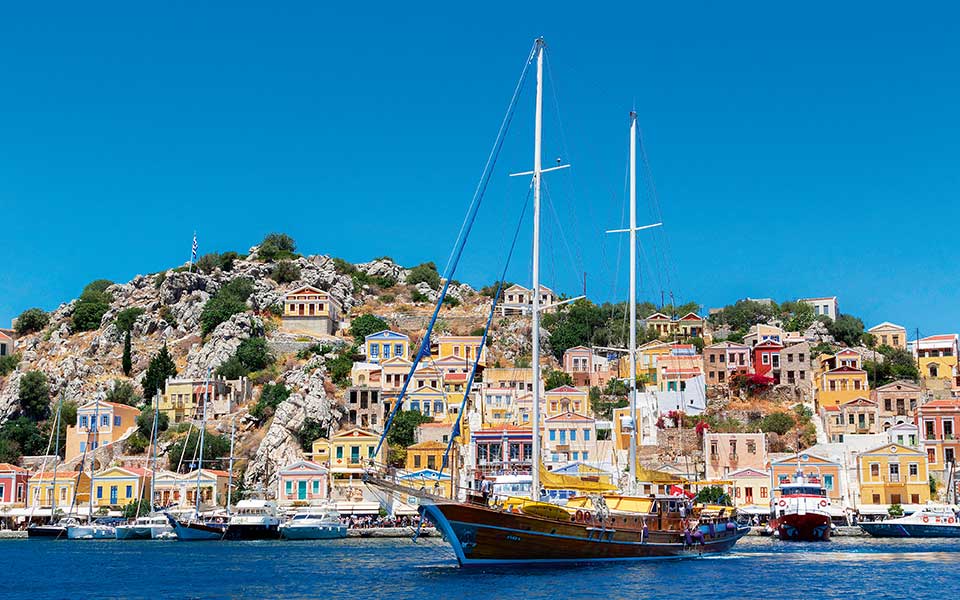
© Visualhellas.gr
Cruising the Dodecanese for a few days or a week, not on a cruise ship but on a small vessel, preferably a sailboat (this was, of course, the way everyone traveled between these islands until quite recently) brings about a shift in perspective, revealing – both literally and figuratively – new viewpoints. Travelers who approach the islands this way discover another world, a universe of different colors and textures and the concomitant emotions that these conjure up: curiosity, wonder, joy and contentedness.
What’s more, a small boat offers you access to places that are hard or impossible to visit otherwise. Let me give some examples.
The coves on the unspoilt eastern coast of Kalymnos and on other islands offer that sense of harmony and mellow serenity that I spoke of at the start of this article. These places impart an unforgettably soothing sense of the eternal timeless rhythm of land and sea. They also make good starting points for exploration further north, towards sinuous Leros, remote Lipsi and Arki, or even the holy island of Patmos.
If you like exploring ancient ruins, the stupendously rocky islet of Telendos, near Kalymnos, is an incredible place. A steep mountain jutting out from a deep, amphitheatrically shaped gulf, it now has only a few inhabitants. Things must have been very different in the early Byzantine years, as indicated by the remains of half a dozen churches, a well-preserved necropolis, and the ruins of a stupendous clifftop fortified town.
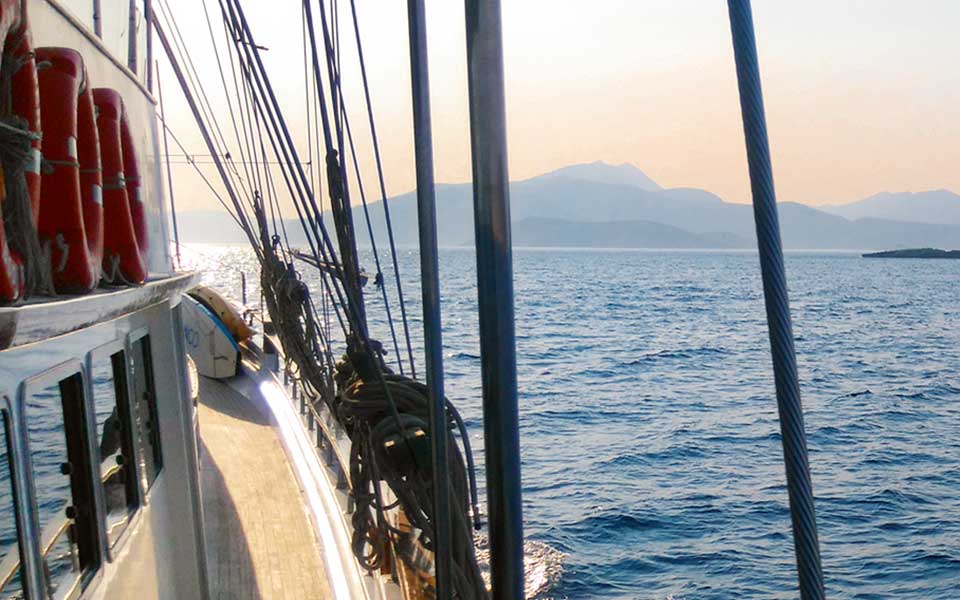
© Heinrich Hall/Peter Sommer Travels
On a calm day, you’ll find a whole series of tiny sandy beaches well hidden below the steep cliffs of the Kefalos Peninsula in western Kos. These spots are absurdly picturesque and impossible to reach any other way. They give you the impression that, apart from lucky sailors like you, only mermaids (or mermen?) frequent them.
Anchor off Gyali, between Kos and Nisyros, and you’ll get to swim in spectacularly clear waters over a fine white sand bottom. You can also wade ashore to look for the ubiquitous pumice stones (fun to play with, because they float), or for the glistening seams of obsidian that run through the rugged lava cliffs. Don’t try to climb the cliffs, though; they’re brittle and treacherous.
Around Pergousa, to the west of Nisyros, you can take shelter from the prevailing western winds, finding a perfectly calm patch of blue sea, a haven of stillness when the surrounding seas are agitated and flecked with whitecaps. Walking about on this uninhabited island, you’ll find the remains of past human existence: collapsed fieldstone walls and enclosures left behind by shepherds in recent centuries, along with the foundations of an ancient tower, built over 2,000 years ago to keep watch over the boats passing from the Cyclades to the Dodecanese or vice versa.
Touring the Dodecanese by sea is not the only way to approach these wonderful islands, but it is a unique one; an experience that is infinitely enjoyable, and wonderfully unpredictable!
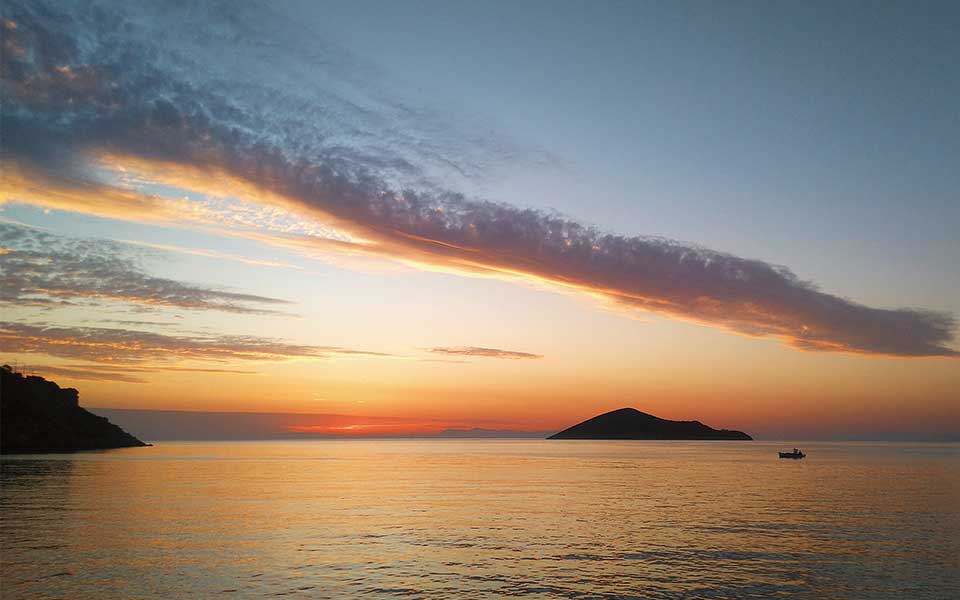
© Heinrich Hall/Peter Sommer Travels
ahoy there!
To sail or motor between the islands on a small boat for several days, you can charter any one of a variety of boats – bareboat or skippered – available from all of the larger islands. For larger groups, traditional multi-cabin motor sailors known as gulets are a superb and stylish option.
A week-long Dodecanese boating itinerary can focus on seascapes and beaches, on harbor towns with their restaurants and bars, on cultural and archaeological content, or on any combination of these features. An itinerary starting from and ending at Kos could easily take in: the neighboring islet of Pserimos, small and unspoilt; Kalymnos, with the great town of Pothia and the lonely coves; Leros, another island of many hidden secrets; and the rock that is Telendos. Starting from Rhodes, a week’s travel could include: Symi with its beautiful harbor town; verdant Tilos; volcanic Nisyros; remote Chalki; and then a return to Rhodes. Starting from Leros or Patmos, one could take in the Byzantine wonders of Patmos and the islets eastwards of Patmos or northwards of Leros, including Lipsi, Arki and other idyllic spots.
Dodecanese boat trips are available from many operators, usually on a Saturday-to-Saturday schedule. One well-established company is UK-based Peter Sommer Travels, with culturally focused gulet cruises for up to 16 guests guided by a team of archaeologists. Apart from scheduled tours in the Dodecanese, they also offer tailor-made private charters. For bareboat or skippered charters on smaller yachts, Greek operators include: Vastardis Yachting and Istion, each with boats available in both Rhodes and Kos; and Kavas, based in Kos. These operators may be able to offer itineraries of less than a week’s length.

